What is the Cost of Living in Costa Rica for Residents?
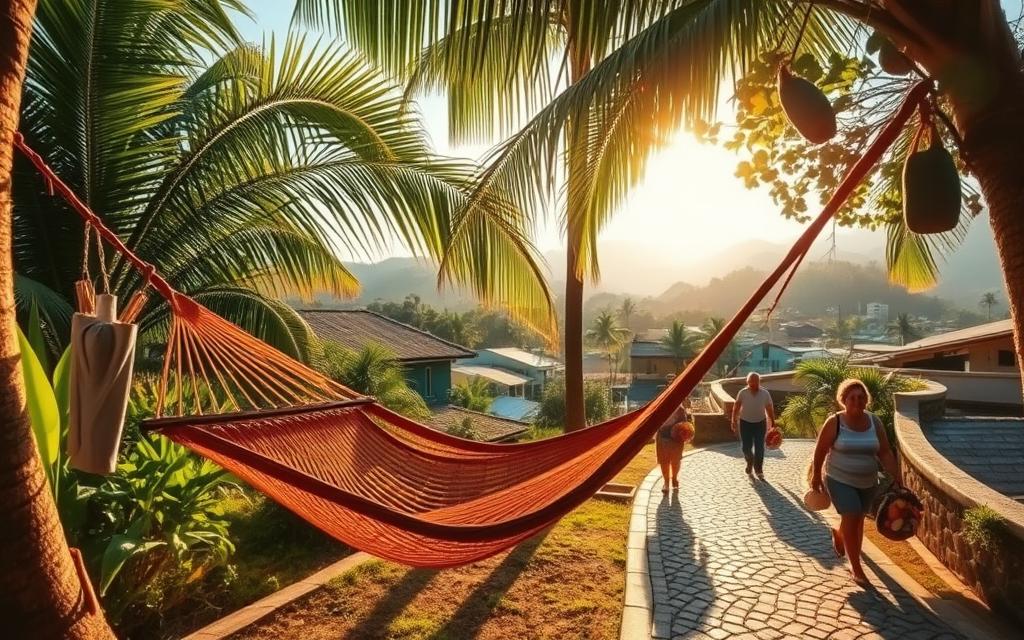
Costa Rica has become a haven for individuals and families seeking a better quality of life. With its lush landscapes, pleasant climate, and rich culture, this Central American country has emerged as a desirable destination for those looking to relocate.
Many American, Canadian, and European expats find that their day-to-day expenses are significantly lower in Costa Rica compared to their home countries. The cost of living varies depending on lifestyle, but overall, Costa Rica offers an affordable option for those looking to relocate. A single person can comfortably live on between $1,600 and $2,000 a month, although this figure can fluctuate based on individual circumstances.
As we explore the cost of living in Costa Rica, we'll examine the various factors that influence expenses, including housing, food, healthcare, transportation, and entertainment, to provide a comprehensive understanding of what to expect.
Understanding Costa Rica's Appeal to Foreign Residents
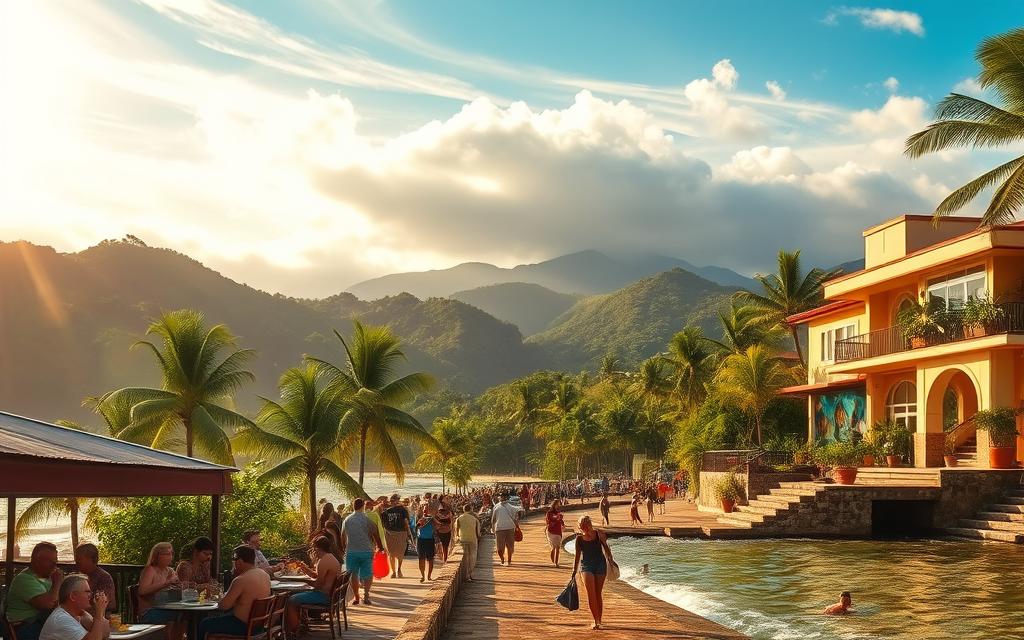
Costa Rica has become a hotspot for foreign residents due to its unique blend of natural beauty and high quality of life. This Central American country offers an attractive lifestyle that combines stunning landscapes, a favorable climate, and a rich cultural heritage.
Natural Beauty and Climate Advantages
Costa Rica is renowned for its exceptional biodiversity, boasting nearly 6% of the world's total biodiversity. The country's diverse landscapes range from pristine beaches to lush rainforests and dramatic mountain vistas, all within a relatively compact geographic area. The stable year-round climate, with temperatures between 70-85°F (21-29°C) in most populated areas, eliminates heating costs and provides comfortable living conditions throughout the year.
Political Stability and Quality of Life
Costa Rica's long-standing political stability, having abolished its military in 1949, has fostered a peaceful society with strong social institutions. The country's commitment to environmental sustainability is evident in its protected natural areas, which cover approximately 25% of its territory. This dedication to conservation contributes to clean air and water quality, enhancing the overall quality of life for residents. Costa Rica consistently ranks high in global happiness indices, thanks in part to the "Pura Vida" philosophy, which emphasizes simple living and appreciation of nature.
Residency Options in Costa Rica
The country provides multiple pathways to residency, catering to various lifestyles and financial situations. Costa Rica's residency programs are designed to attract foreign investment, talent, and retirees, offering a straightforward process for those who qualify.
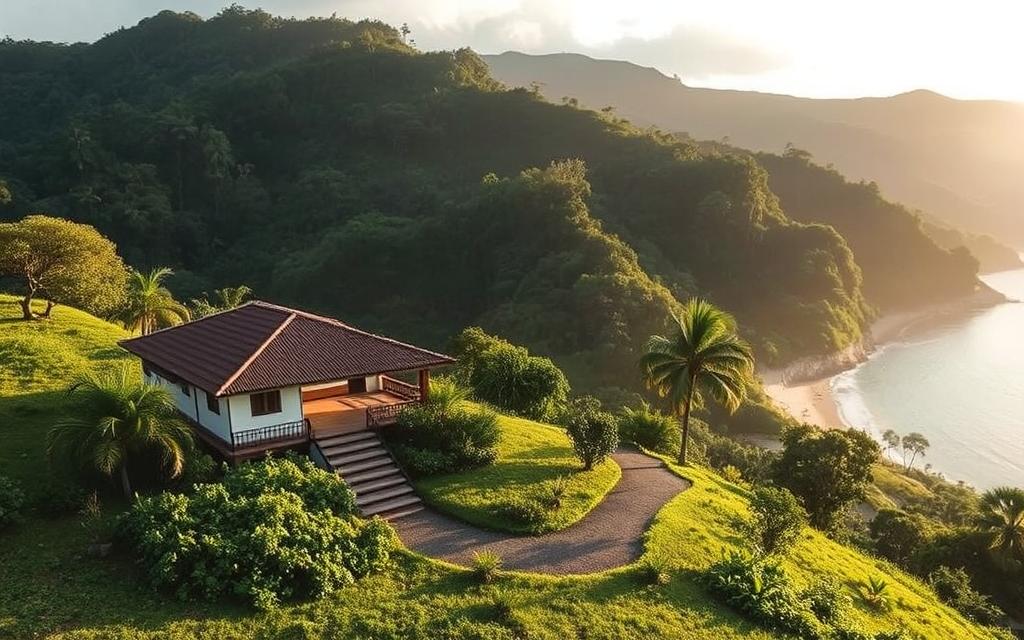
Rentista Residency Program
The Rentista Residency Program is ideal for individuals with a stable income, such as retirees or remote workers. To qualify, applicants must demonstrate a monthly income of at least $2,500 for a minimum of two years. This program is attractive due to its relatively straightforward requirements and the flexibility it offers.
Investment Residency Path
For entrepreneurs and investors, the Investment Residency path offers an opportunity to contribute to Costa Rica's economy while obtaining residency. A minimum investment of $200,000 in a business, real estate, or government-approved projects is required. This option not only grants residency but also potentially opens up business opportunities within the country.
Permanent Residency Requirements
Permanent Residency becomes an option after maintaining temporary residency for three consecutive years. This status offers long-term security and additional benefits, including access to Costa Rica's universal healthcare system, known as Caja. To apply, individuals must meet specific requirements, including income thresholds and background checks. For more detailed information on the residency process, you can visit Jaros CR.
What is the Cost of Living in Costa Rica for Residents?
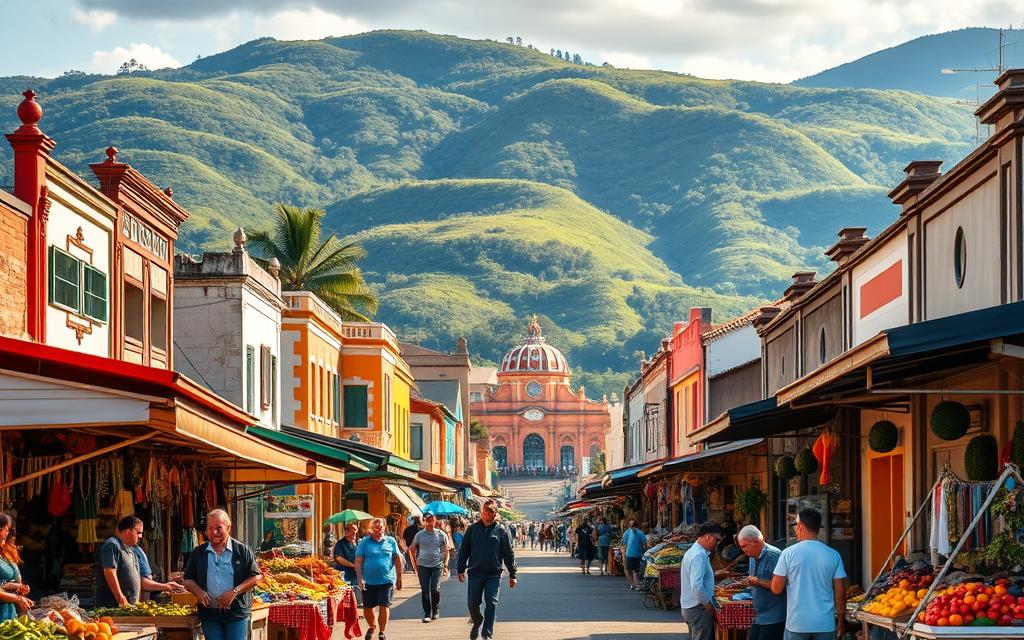
The cost of living in Costa Rica is a crucial consideration for individuals and families thinking of making this tropical paradise their home. Costa Rica offers a wide range of living costs, from housing and food to healthcare and fun activities. Understanding these expenses is vital to making an informed decision about your lifestyle.
Average Monthly Expenses for Singles vs. Couples
A single person can live in Costa Rica on a monthly budget ranging from $1,600 to $2,000. However, some singles manage on less, while others spend more, depending on their lifestyle choices. For couples and families, a comfortable lifestyle typically requires between $2,500 and $3,500 per month, covering all expenses, including housing, utilities, food, transportation, healthcare, and entertainment.
Regional Cost Variations Across Costa Rica
Costs in Costa Rica vary significantly across different regions. Urban areas like San José tend to be more expensive than rural communities but offer more amenities and services. For example, housing costs, food prices, and transportation expenses can differ substantially between urban and rural areas. Understanding these regional variations is key to planning your budget effectively.
When considering Costa Rica as your new home, it's essential to factor in these regional cost differences to ensure a smooth transition and an enjoyable living experience.
Housing Costs for Residents
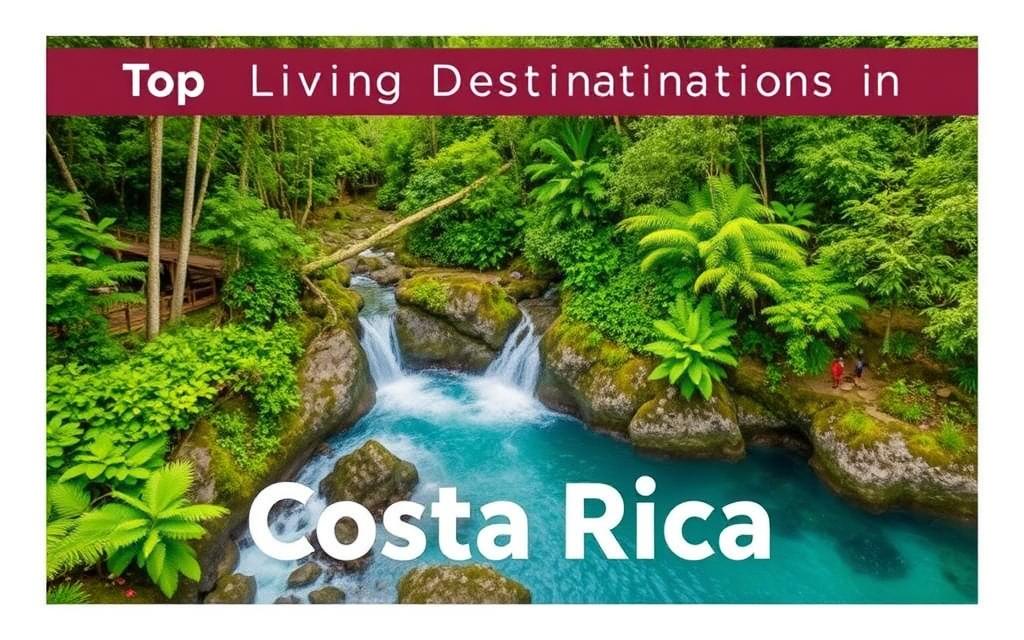
For expats and residents alike, housing costs in Costa Rica can vary significantly based on location and lifestyle. Whether you're renting or buying, understanding these costs is crucial for planning your move.
Rental Prices in Popular Expat Areas
Rental prices in Costa Rica differ greatly depending on the location. In San José, the capital city, a one-bedroom apartment in the city center costs between $600-740 per month. Outside the city center, the same apartment might cost $360-445. In popular expat areas like Tamarindo, a one-bedroom apartment rents for $900-1100, while in more affordable areas like Cartago, it costs $255-315.
Buying Property: Costs and Considerations
Buying property in Costa Rica is another viable option for residents. The cost per square meter varies across regions, with San José averaging around $1,800. Coastal properties may command higher prices due to their desirability. It's essential to consider not just the purchase price but also ongoing costs like property taxes and maintenance.
Utility Expenses: Electricity, Water, and Internet
Utility expenses add to the monthly housing costs. Basic utilities (electricity, water, garbage) for a typical apartment average $56-68. Internet services are relatively affordable, costing $40-50 per month for high-speed connections. Air conditioning, particularly in coastal areas, can significantly increase electricity costs.
Food and Grocery Expenses

When it comes to food and grocery expenses, Costa Rica presents a mixed bag of affordable and premium options for residents. The country's culinary scene is a blend of traditional and modern elements, influenced by its rich cultural heritage and geographical diversity.
Shopping at Local Markets vs. Supermarkets
Shopping at local farmers' markets, known as "ferias," is a cost-effective way to purchase fresh produce, meats, and other staples. A couple can stock up on a week's worth of groceries for approximately $40 to $50. For instance, pineapples cost around $1.50, a pound of red snapper is about $10, and a head of lettuce can be as low as 50 cents. In contrast, supermarkets offer a wider range of imported and processed foods at higher prices. The monthly grocery bill for one person averages between $200 to $300, depending on dietary preferences and shopping habits.
Dining Out: From Sodas to Tourist Restaurants
Dining out in Costa Rica can be very affordable, especially at local establishments known as "sodas." Meals like casado or arroz con pollo cost between $6 to $11. For a mid-range dining experience, a three-course meal for two can start at $30 and go up to $50. Daily food expenses can range from $48 to $69, depending on the choice of dining options. Tourist-oriented restaurants in popular areas tend to charge higher prices, comparable to those in North American restaurants.
Healthcare Costs and Insurance Options
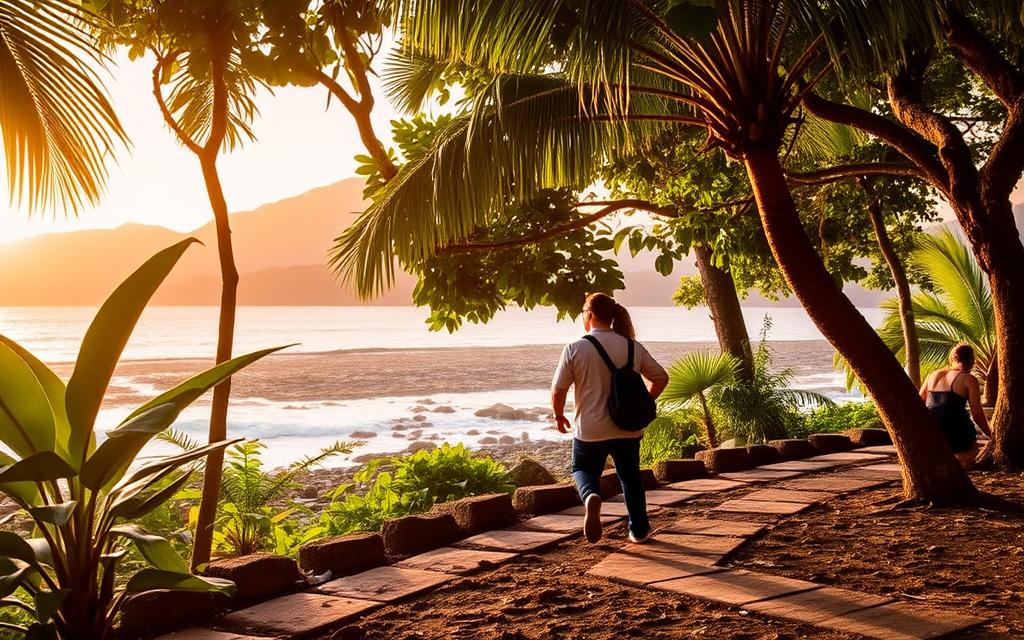
Costa Rica stands out for its comprehensive healthcare system, which is both accessible and affordable. As a resident, you have the option to enroll in the country's universal healthcare system, known as the Caja, or opt for private healthcare services.
The Caja: Costa Rica's Universal Healthcare System
The Caja Costarricense de Seguro Social (CCSS), or "the Caja," provides comprehensive coverage to citizens and legal residents for a monthly fee based on reported income, typically ranging between 7% and 11%. This fee grants access to all necessary medical services, including doctor visits, specialist consultations, surgeries, hospital stays, and prescription medications, without additional out-of-pocket costs. For more information on making the most of your residency, including healthcare options, visit our guide on next steps after obtaining.
Private Healthcare Costs and Facilities
Private healthcare facilities, such as Hospital CIMA and Clínica Bíblica, offer high-quality care with shorter wait times and more personalized service. The costs are approximately 50-70% lower than comparable services in the United States. For instance, doctor visits cost between $65 to $85, and specialist consultations range from $90 to $110.
Health Insurance Plans and Premiums
Private health insurance options are available from providers like Allianz, Cigna, and IMG Global, with monthly premiums ranging from $50 to $250, depending on age, coverage level, and pre-existing conditions. Many expats choose a hybrid approach, maintaining Caja coverage for major medical issues while paying out-of-pocket for occasional private care. Private insurance usually covers 80% of costs, making budgeting easier.
Transportation Expenses

Costa Rica offers a range of transportation options, from affordable public buses to private vehicle ownership, each with its own set of costs. Understanding these expenses is crucial for residents to manage their budgets effectively.
Public Transportation Costs and Accessibility
Public transportation in Costa Rica is both affordable and accessible. The bus system is extensive, covering both urban and rural areas. A local one-way fare starts at $0.70, and monthly passes are available for $30 to $40. For intercity travel, a round-trip bus ticket from San José to popular beach destinations costs approximately $10. This affordability makes public transportation the most economical option for many residents.
Vehicle Ownership: Purchase, Maintenance, and Fuel
While having a car offers convenience, it comes with higher costs. Import taxes make vehicles 20-50% more expensive than in the US or Canada. Gas prices range between $3.91 and $4.79 per gallon. Monthly maintenance costs average about $130. For those who prefer the flexibility of owning a vehicle, these costs need to be factored into their budget. For more information on living in Costa Rica, including financial planning for retirement, visit Jaros CR.
Entertainment and Leisure Costs

Costa Rica offers a diverse range of entertainment and leisure activities that cater to various budgets and preferences. Residents can enjoy the country's natural beauty, rich culture, and vibrant lifestyle without breaking the bank.
Outdoor Activities and Natural Attractions
Outdoor enthusiasts will find Costa Rica to be a paradise, with numerous opportunities for hiking, beach trips, and wildlife watching. Many national parks and beaches are free or low-cost, making them accessible to everyone. For instance, national park entrance fees range from $10-15 for foreign residents, with annual passes available for frequent visitors. This allows residents to enjoy the country's remarkable biodiversity and natural attractions at an affordable cost.
Cultural Events, Restaurants, and Nightlife
Costa Rica's cultural scene is also thriving, with various events and festivals throughout the year. Many of these events are free or low-cost, offering a chance to experience authentic Costa Rican traditions. When it comes to dining out, meals can be affordable, with prices starting from $6-10 per person. Nightlife options range from casual beach bars to more sophisticated venues in urban areas, with overall costs significantly lower than in North America. Residents can enjoy a vibrant lifestyle in Costa Rica while keeping their expenses in check.
Regional Cost Comparison: Urban vs. Coastal vs. Rural
Costa Rica offers a range of lifestyles, from urban to coastal to rural, each with its own cost implications. The country's diverse geography significantly influences the cost of living, making it essential to consider these regional differences when planning a move.
San José and Central Valley Living Costs
San José and the Central Valley offer a balance of urban amenities and moderate costs. One-bedroom apartments range from $400 to $700, depending on the neighborhood and quality. The mild climate in the Central Valley eliminates the need for air conditioning, resulting in lower utility bills compared to coastal regions.
Beach Towns and Tourist Areas
Beach towns like Tamarindo, Jacó, and Manuel Antonio are popular among tourists and expats but come with premium prices for housing. Rentals are typically 10-25% higher than in the Central Valley, especially during peak tourist season. Additionally, food prices at restaurants and grocery stores catering to tourists are higher, though these areas offer unique lifestyle benefits.
Rural and Mountain Communities
Rural and mountain communities, such as San Ramón, Grecia, and Atenas, offer the most affordable housing options, with rentals starting at $300-600 monthly. These areas are attractive to budget-conscious retirees and those seeking a more laid-back lifestyle. However, they may require more travel for certain amenities, making it essential to weigh the pros and cons. For more information on residency benefits, you can visit Jaros CR.
Conclusion: Is Costa Rica Affordable for You?
Costa Rica's cost of living is approximately 37% lower than in the United States, making it an attractive option for various types of residents. Ultimately, the decision to move to Costa Rica depends on individual circumstances and lifestyle choices.
For single people, a monthly budget of $1,600-2,000 typically provides a comfortable lifestyle, while couples can live well on $2,500-3,000. Families with children need to consider additional expenses like private education, ranging from $300-800 monthly per child.
Lifestyle choices significantly impact affordability. Those willing to live like locals, shop at farmers' markets, and use public transportation can reduce their expenses considerably. For more information on making Costa Rica your home, you can explore the Pensionado Residency program, which offers various benefits for retirees.
Healthcare remains one of Costa Rica's most compelling financial advantages, with both the public Caja system and private options providing quality care at a fraction of North American costs. Prospective residents should conduct thorough personal financial analysis based on their specific needs and preferences.


